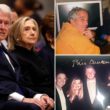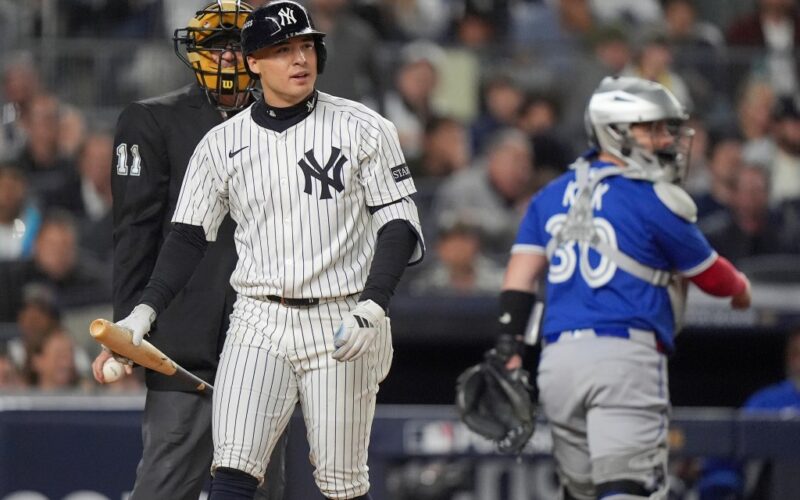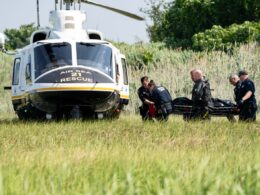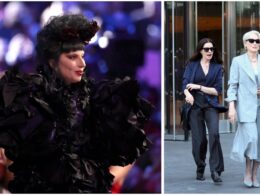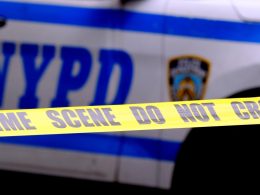Now that another Yankee season has concluded prematurely without a championship trophy, the usual finger-pointing begins and fans in every corner of Yankeeland are looking for culprits. But I’m here to say in this latest playoff elimination at the hands of the Blue Jays the blame should fall squarely on the players themselves.
In short, the Blue Jays proved themselves to be a better team — and that was not the fault of Yankees GM Brian Cashman. He did everything he could to, first, pivot to other areas of need after Juan Soto’s defection last December and, later, to shore up the infield defense midseason, and finally to land a top-flight closer in David Bednar along with a much-needed burst of speed and energy in Jose Caballero at the trade deadline.
You could certainly make the case — as I have — that no GM in baseball had a better year than Cashman with his successful trades and signings of Max Fried, Cody Bellinger, Paul Goldschmidt, Fernando Cruz, Bednar and Caballero that cost the Yankees no players of consequence and otherwise just money.
What the AL Division Series — and actually their regular season matchups in which the Yankees were 5-8 against the Blue Jays — came down to was a matter of Toronto being the best team in baseball in terms of making contact and putting the ball in play and the Yankees one of the worst. During the season the Jays’ batters had the most hits and second lowest strikeouts in the majors.
By contrast, the Yankees had the third most strikeouts behind only the Rockies and Angels, and the 12th most hits. In addition, the Yankees hit 83 more homers than the Jays during the season but scored only 43 more runs. When it came to clutch hitting, the Jays led the majors hitting .292 with runners in scoring position as opposed to the Yankees who ranked 12th at .255.
Although on paper it could be argued the Yankees had a quality player at every position (once Cashman shored up third base with the acquisitions of Ryan McMahon and Caballero), the fact remained they were still the same home run-or-bust offense they’ve been for the last few years. And it was much the same in the ALDS as the Jays out-hit the Yankees 37-24 in the four games and struck out only 34 times to the Yankees’ 50 — 12 of them by Anthony Volpe.
Which brings us to what comes now for Cashman in his effort to rectify the one over-riding Yankee flaw that seemingly shows up way too many times in the regular season and especially against good pitching in the postseason – too many damn strikeouts and two few multi-hit rallies. If Cashman could be blamed for anything this year it was his blind loyalty to Volpe, who hit .212 with 150 strikeouts and just 43 walks in one of the historically worst seasons ever by a major league shortstop. And his 73.3 strikeout percentage in the ALDS was the worst mark ever in a divisional series (minimum 15 plate appearances).
This cannot continue. The Yankees’ top prospect, George Lombard Jr., is a shortstop but he’s not nearly ready, hitting just .237 in 132 games at High-A and Double-A this year — which means Cashman probably needs to acquire a stopgap shortstop to platoon with Caballero next year. In any case, it can’t be Volpe.
What the Yankees need more than anything else is a leadoff hitter, who makes consistent contact and doesn’t strike out. They’re going to let Trent Grisham go and not risk tendering him the $22 million qualifying offer, and right now are looking at turning over left and center field to the kids IJasson Dominguez and Spencer Jones). But again we’re talking more strikeouts — Dominguez had 115 as opposed to 41 walks as a part-timer this year and Jones, despite his minor league-leading 35 homers at Double-A and Triple-A, also had a disturbing 179 strikeouts.
As for free agents, there is nothing to the reports that the Yankees have interest in Kyle Schwarber. The last thing they need is to invest a $100 million in a 33-year-old DH who struck out 197 times and went 3-for-16 with eight strikeouts in the NLDS vs. the Dodgers. However, I feel fairly confident Cashman will re-sign Cody Bellinger, who was the second most valuable player on the Yankees this year and loves being a Yankee. I can also see him bringing back Goldschmidt on a one-year deal to platoon at first with Ben Rice.
At least Cashman will not have to dip into the most expensive area of free agency — starting pitching — where once again his player development department has done a commendable job assembling a stable of quality young starters. Conceivably Cam Schlittler will advance even further in ’26 as a top-of-the-rotation starter, and starting next season at Triple A, righty Elmer Rodriguez-Cruz, who Cashman acquired in December 2024 from the Red Sox for catcher Carlos Narvaez, has been rated by scouts as one of the top pitching prospects in all the minors. With Gerrit Cole and Clarke Schmidt both returning next year, the Yankees figure to have a wealth of starting pitching which can be counted on to sustain them to another trip to October.
It’s what Cashman does about the hitting that will once again determine how far they go in October.
IT’S A MADD, MADD WORLD
Last Tuesday Jacksonville real estate developer Patrick Zalupski, Ohio businessman Bill Cosgrove and Ken Babby, owner of minor league franchises in Jacksonville and Akron, were introduced at George M. Steinbrenner Field as the new owners of the Tampa Bay Rays, and while they all expressed sunny optimism about the future of the franchise, at the end of the day they provided no answers as to why they would have spent an astronomical $1.7 billion on a team with no stadium and traditionally one the lowest attendances in baseball.
Presumably they paid $1.7 billion for the team — that previous owner Stu Sternberg bought for a reported $200 million in 2004 — with the intention of getting a new stadium in Tampa (Hillsborough County) where the bulk of the Tampa Bay population is. It most certainly was not worth close to that if Rays remained in St. Petersburg. But as was revealed at the press conference, the new owners were not permitted to have any discussions with Tampa/Hillsborough County officials until the deal was completed. So they went into this blindly. What they did say, is that their vision is for a new stadium (with a non-retractable dome) in a village-like setting with shops, restaurants and bars similar to the Braves’ Truist Park in Cobb County outside Atlanta which they termed “the gold standard” for modern day ballparks. They also said they would need a minimum of 100 acres — somewhere — to build such a complex. Left unsaid was where the money was going to come from for the new ballpark — which had been the problem with Sternberg in numerous stadium plans that never were fulfilled.
A telling backstory to the press conference were the remarks of both Hillsborough county commissioner Joshua Wostal and Tampa mayor Jane Castor who re-affirmed their previous stances that no taxpayer dollars would be approved for a new stadium for the Rays. In addition, the new owners admitted that the Rays’ economic situation will not change as long as they’re still playing at Tropicana Field (where the lease runs out in 2027), dampening any hopes of Rays fans that the team payroll (also consistently among the lowest in baseball) will be substantially increased. I’m sure the new owners were fully briefed by Sternberg about the estimated combined $100 million the team reaps every year from revenue sharing and the MLB central fund, which more than covers the team payroll. So essentially what you had was a press conference of three rich guys talking about how excited they were to be owners of a baseball team, and I could not help but be reminded of the last scene in the Robert Redford movie “The Candidate” in which Redford’s character, a political neophyte who unexpectedly wins the governorship of California, turns to his campaign manager and asks: “Now what do we do?”

